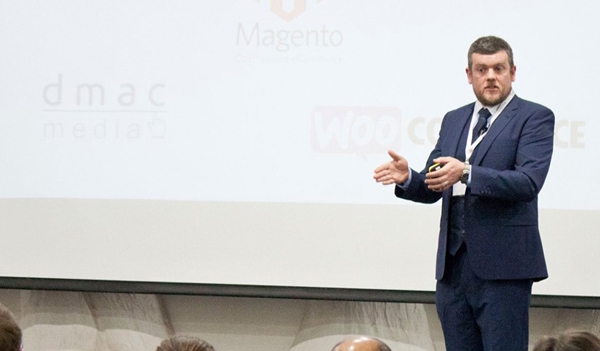The quiet majority: why marketers need to cater to low intent shoppers
- Written by Dave McEvoy, DMAC Media

When shoppers are browsing online, whether for a new phone, holiday, or pair of shoes, they usually know exactly where they stand. Sometimes they’re casually browsing, collecting ideas. Other times, they’re ready to hit “Buy Now.” And often, they’re somewhere in the middle, weighing up options.
As marketers, we must realise that this behaviour isn’t just personal, it’s universal. And in our industry, it has a name: customer intent.
Understanding what stage a potential buyer is at in their journey is one of the most powerful tools we have. But here’s the problem: too many businesses focus only on customers who are ready to purchase, those we label as high intent, and in doing so, they miss out on a much bigger opportunity.
The customer intent pyramid
Customer intent can be split into three broad categories. At the bottom of the pyramid, you’ll find low-intent shoppers. These people aren’t ready to buy yet - they’re doing research, comparing products, or just exploring their options. When someone types “best laptops under £1,000” into a search engine, they’re at this stage.
In the middle are medium-intent users. They have an idea of what they want and are refining their options. They might search for a specific brand or model, like “Dell XPS 13 vs MacBook Air,” or go directly to a company’s website to explore deals. They’re closer to converting but still deciding.
At the top of the pyramid are the high-intent shoppers. These are the people with their wallets ready. They’re searching terms like “buy iPhone 15 now” or “fastest delivery Samsung Galaxy.” Most digital campaigns are designed with these users in mind, and for good reason. They convert quickly and deliver measurable results.
But focusing exclusively on high-intent customers is a short-sighted strategy.
The problem with playing it safe
It makes sense that businesses lean into high-intent marketing. The return on investment is immediate, the results are easy to track, and the conversion rates look impressive on a report. But here's the catch: high-intent customers only represent a small slice of your total audience.
Every time we ignore low and medium intent users, we’re walking away from future sales. Businesses can pour thousands into performance ads targeting ready-to-buy customers while completely neglecting the larger group who just need time, and the right content, to make a decision.
Marketing to people who aren’t quite ready to buy might seem like a gamble, but it’s really an investment. These users are at the beginning of their journey, and if you’re the brand that helps guide them, they’re far more likely to come back when it’s time to make a purchase.
What low intent shoppers actually want
So, what does effective marketing to low intent customers look like?
It’s all about education, clarity, and trust; these users are gathering information. That means publishing content that answers their questions, offers comparisons, and helps them feel informed. Think buying guides, product explainers, customer reviews, and helpful blog posts.
When someone lands on a product page and isn’t ready to buy, they’ll scroll, sometimes far below the fold, looking for reassurance (the fold means content visible to users without needing to scroll down). Detailed descriptions, tech specs, how-to videos, and transparent pricing all make a difference. You might not see the conversion today, but you’re planting the seed for a later purchase.
Customers who feel informed are more likely to trust a brand, and trust is a key driver of conversions. In an online space crowded with scams and knockoffs, trust is your strongest currency.
Don’t forget medium intent users
Let’s not overlook those in the middle of the funnel. These users are often overlooked because they’re neither fully committed nor totally undecided. That being said, they can be incredibly valuable.
They’re using site search, filters, and navigation tools to find specific products or services. If your site structure is clunky, inconsistent, or slow, especially on mobile, you’re losing them. Clean, intuitive navigation and intelligent search are essential to help these users move closer to conversion.
This group also responds well to personalised experiences. If I’ve been browsing laptops and then return to your site, showing me relevant recommendations or letting me pick up where I left off can make a huge difference.
A balanced strategy pays off
I’m not saying we should stop targeting high intent users. Of course, we should continue to serve them well - they’re ready to convert and need a frictionless experience. But for sustainable growth, we must widen the lens.
The most successful campaigns don’t just go after quick wins. They invest in long-term relationships with customers. That means being there when someone starts asking questions, guiding them as they explore options, and finally making it easy to buy when they’re ready.
It’s about playing the long game.
Find out more https://dmacmedia.com/uk/







